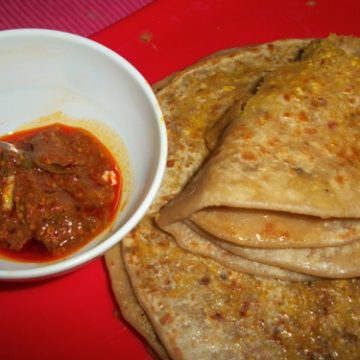Mooli Paratha, also known as Radish Paratha, is a North Indian stuffed flatbread made using grated white radish (also called mooli or mullangi) and spices, wrapped inside soft whole wheat dough, then cooked on a hot tawa with oil or ghee until golden. This humble paratha is warm, spicy, flavorful, and incredibly comforting. It’s a great option for breakfast, lunch, or even dinner, especially when served with curd, pickle, or raita. It’s simple to prepare and uses ingredients you likely already have in your kitchen. The outer layer turns beautifully crisp while the inside stays soft and packed with flavor.
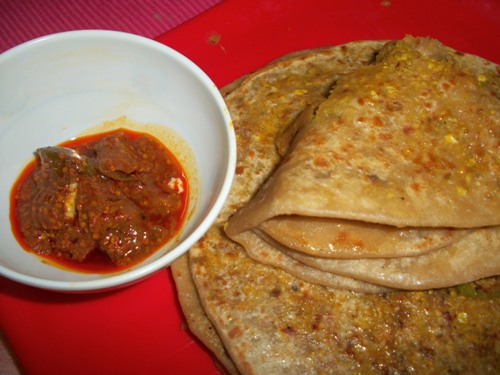

Mooli paratha
Radish is not one of my favourite vegetable because of its strong flavour and aroma. But I love it when it is added in sambar which Amma does often. When I heard about this paratha, I was scared a little bit at first. After that saw this in lots of blogs and I got a little confident to give it a try.
Jump to:
About Mooli Paratha Recipe
Mooli Paratha is one of those traditional recipes that instantly makes you feel at home. Though radish is often avoided by many due to its strong aroma, when used the right way like in this recipe it transforms beautifully. The secret lies in how the radish is prepared before stuffing it’s tossed with salt and turmeric, rested, and then squeezed thoroughly to remove moisture and sharpness. What’s left is a mellow, slightly sweet veggie that pairs beautifully with Indian spices.
I first discovered this recipe after seeing it in multiple blogs, even though I was hesitant to try radish in a paratha. I’m someone who doesn’t enjoy radish in sabzis, but the idea of masking its rawness with dry masalas, onions, and carom seeds (ajwain) sounded promising. Once I tried it, it became a surprise favorite in my home. It was soft, held together well, and stayed fresh for long which also made it a great lunchbox dish.
What I also love is how balanced it feels. The whole wheat dough gives it a wholesome base, the stuffing is spiced but not overpowering, and the texture is moist yet dry enough to roll easily. Plus, it’s a good way to sneak in veggies for picky eaters!
Similar Recipes
Aloo Paratha
Cabbage Paratha
Radish Paratha
Egg Paratha
Onion Paratha
Rajma Paratha
Paneer Paratha
Mushroom Paratha


Why this Recipe Works
Reduces Radish Smell – Grated radish has a strong, sometimes overpowering smell and that can put some people off. By tossing it with a bit of salt and turmeric, we draw out excess moisture and mellow down that sharp raw aroma. It’s a simple trick that makes a big difference, especially if you’re not a fan of radish’s strong taste.
Dry Filling – Nobody likes a soggy paratha that tears while rolling. That’s why it’s important to cook the stuffing properly until all the moisture is gone. A dry filling is much easier to work with and stays neatly inside the dough without making it sticky or messy.
Balanced Spices – What I love about this paratha is the way the spices come together, not too strong, not too bland. Garam masala gives warmth, chat masala adds a bit of zing, and ajwain and cumin bring that lovely earthy flavor. It’s tasty but still kid-friendly and mild enough for most palates.
Soft Dough – Resting the dough for at least 30 minutes makes a noticeable difference. It becomes more pliable, soft, and easier to roll out thinly without cracking. Plus, it seals better when stuffing, which means fewer chances of the filling leaking out while cooking.
Why I Like This Recipe
Honestly, this recipe taught me not to judge a veggie too quickly! Radish was never my favorite. I always avoided it unless it was hidden inside a sambar. But this paratha changed my perspective. The way the rawness is reduced, the spices are layered, and the texture turns soft yet crisp on the tawa… it became a family hit.
My mom used to pack it for lunch once I learned to make it right, and it would stay soft even hours later. I remember once, my younger cousin, a super picky eater, bit into this thinking it was aloo paratha and finished it without a complaint. That moment alone made this recipe stay in my heart.
Also, during winters, when radish is fresh and sweet, this paratha becomes even more special. A hot cup of chai on the side and you’re in for a cozy mealtime.
Ingredients
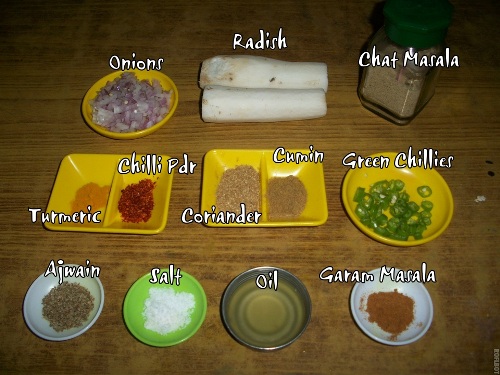

White Radish / Daikon (1 large, grated finely) – This is the star of the dish, the mooli itself. Once grated using a small grater, it turns juicy and blends beautifully with the spices. It has a slightly peppery taste on its own, but when cooked right, it becomes mild and tasty. Grating it finely makes it easier to stuff and roll inside the dough.
Onion (1, finely chopped) – The chopped onion gives a soft bite and a gentle sweetness to balance the heat from the spices. It also adds moisture and texture to the filling, helping everything come together nicely.
Green Chilli (1, finely chopped) – This is where the mild heat comes in. It adds just the right amount of spice without being overpowering. You can always reduce or skip it if you’re making this for kids or someone who prefers it milder.
Spice Powder – I used chilli powder, turmeric, coriander, cumin powder, chaat masala powder.
Ajwain / Carom Seeds (½ tsp) – Ajwain has a distinct, sharp flavor that goes very well with radish. More importantly, it helps digest the radish better, which is helpful since raw or undercooked mooli can feel heavy for some people.
Wheat Flour (2 cups) – This is the base for the paratha dough. Whole wheat flour gives the paratha its softness and slightly nutty flavor. It’s healthier than using plain white flour, and makes the paratha more filling too.


Hacks
1. Always squeeze the radish well after salting:
Grated radish releases a lot of water, especially after adding salt. Make sure to squeeze it really well using your hands or a clean kitchen towel. This step is important because extra moisture will make the stuffing soggy and the paratha might tear while rolling.
2. Let the cooked stuffing cool down completely before stuffing:
Hot or warm stuffing can soften the dough and make it harder to roll. Allow it to cool completely before using it, so it stays firm and easy to work with. This also helps keep the layers inside intact while cooking.
3. Keep the dough soft and pliable – not too dry:
Your dough should feel soft but not sticky. If it’s too dry, the edges will crack while rolling. Adding a few drops of oil while kneading makes the dough more elastic and smooth, which really helps when sealing and flattening the stuffed ball.
4. Use raw flour only lightly for dusting while rolling:
Too much dry flour while rolling can make the parathas dry and hard when cooked. Just a light dusting on the board and rolling pin is enough to prevent sticking. You can even gently shake off the extra flour before placing it on the tawa.
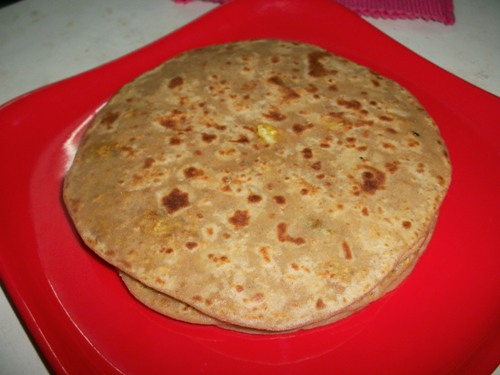

Mooli Paratha (Step by Step Pictures)
  |
| Take all your ingredients for stuffing |
How to Prepare Radish (Mooli) for Paratha
First make stuffing. Take grated radish in a colander and place it over a plate. Add ½ tsp of turmeric and some salt and mix well. Let it stand for 30 mins. Now squeeze all the water with your hands and set it aside..Now this can be used for your filling.
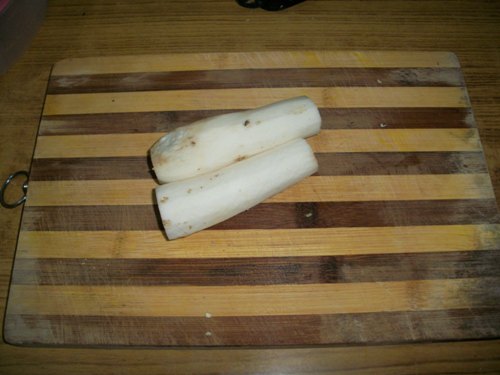  |
| peel your radish |
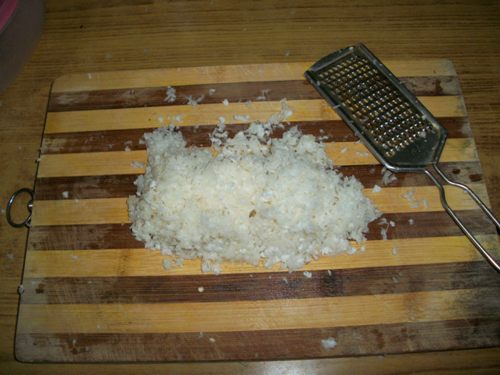  |
| and grate it |
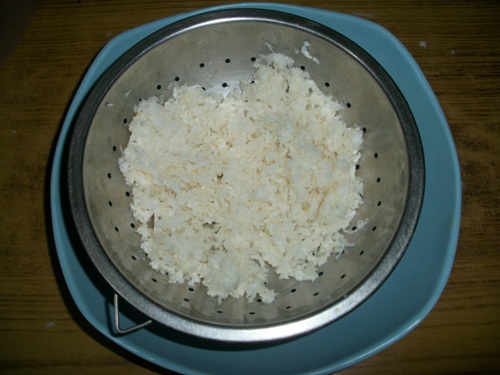  |
| put it in a colander |
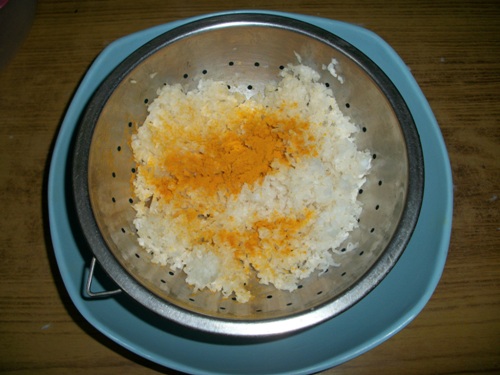  |
| add salt and turmeric |
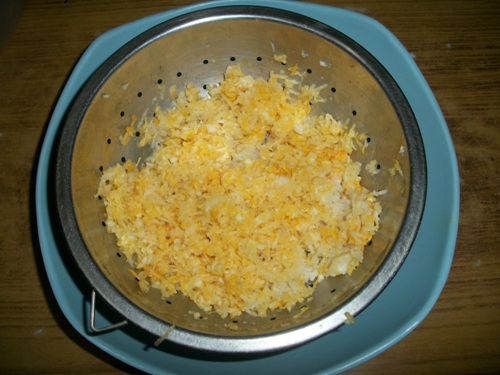  |
| mix well and allow it to stand for 30 mins |
  |
| now start squeezing all the water |
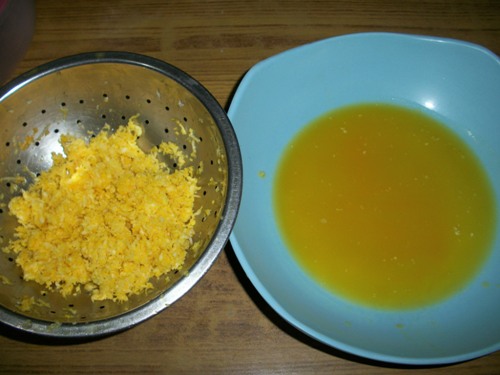  |
| all done. |
How to Make Radish Stuffing for Mooli paratha
Heat oil in a kadai. Add in ajwain and let it sizzle..Add in onions and mix well. Add green chillies and sauté for 2 mins…Now add in all the spice powders and mix well. Now Add in the prepared radish and mix well.Let it cook for 5 mins until it is cooked and all water has evaporated. Remove it in a bowl and allow it to cool down.
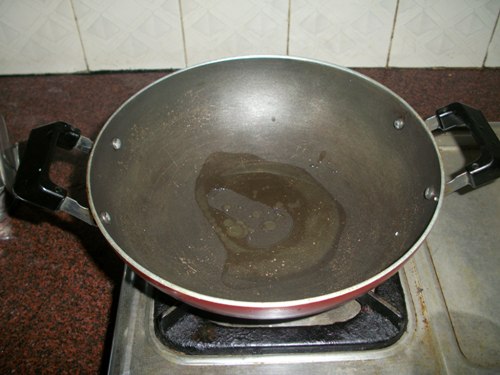  |
| heat oil in a kadai |
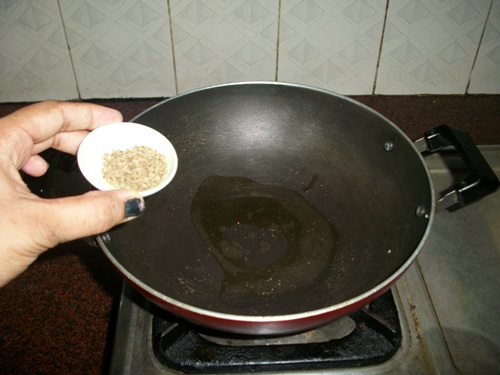  |
| add ajwain seeds |
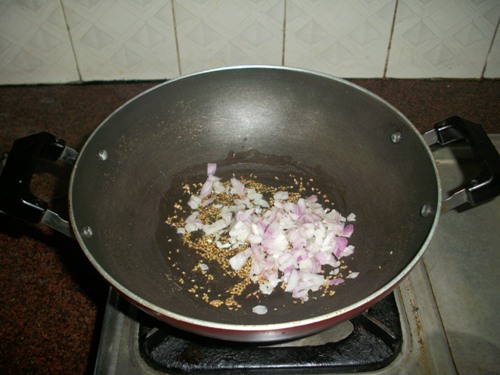  |
| and onions |
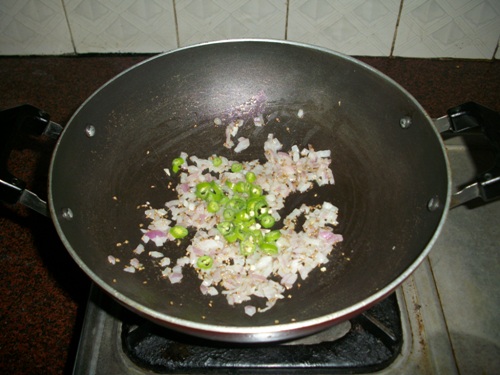  |
| now add green chillies |
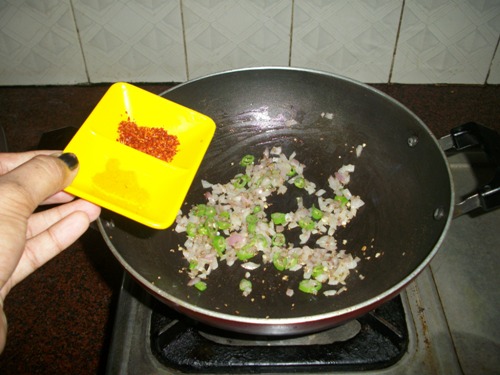  |
| turmeric powder and chilli powder |
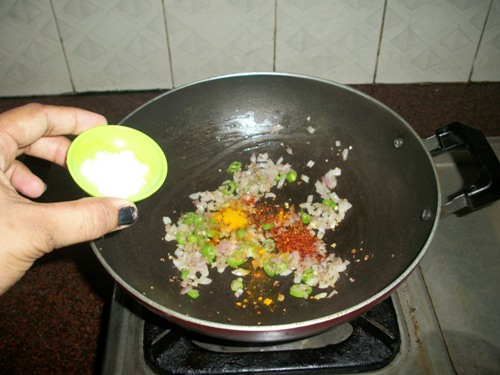  |
| add salt |
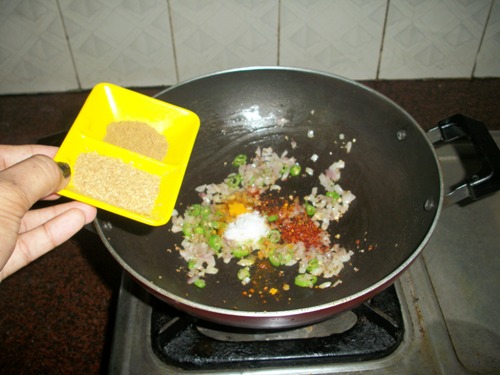  |
| Coriander and Cumin powder goes in |
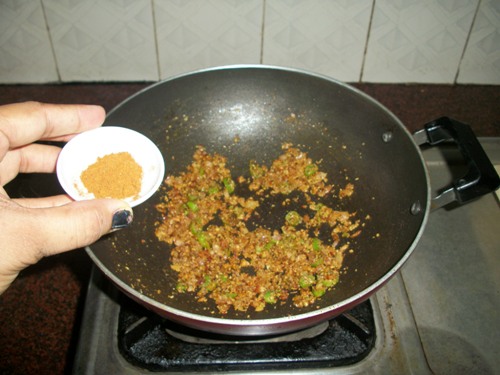  |
| add Garam masala powder.. |
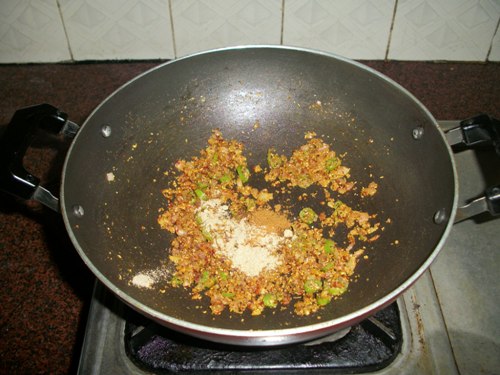  |
| now add chat masala |
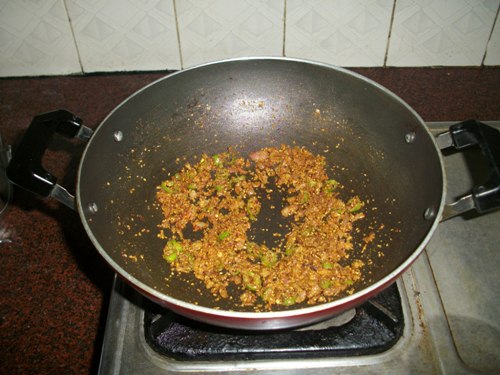  |
| and mix well |
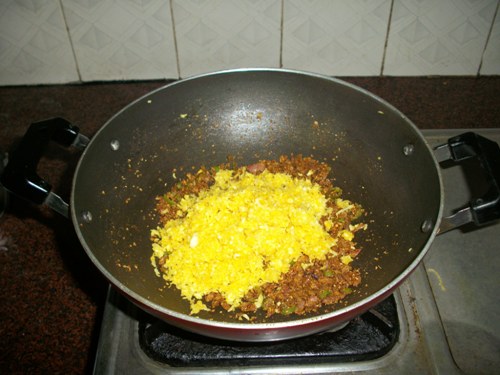  |
| add the prepared radish |
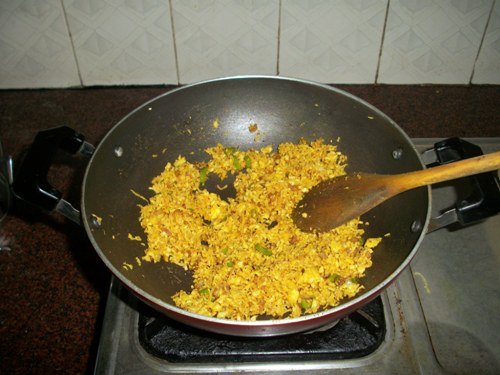  |
| and mix well.. |
  |
| remove it and allow to cool completely |
How to Knead Paratha Dough
Make dough by mixing atta and salt in a bowl. Slowly add in water and make into a dough. Apply some oil and let it stand for 30 mins covered.
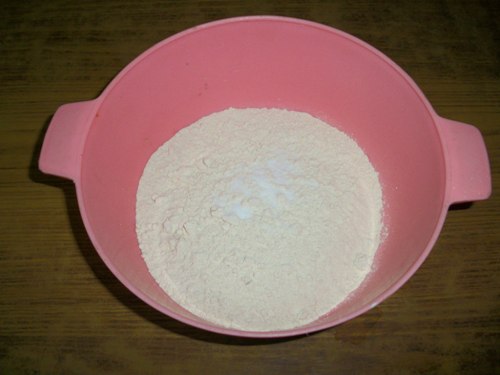  |
| take wheat flour and salt in a bowl |
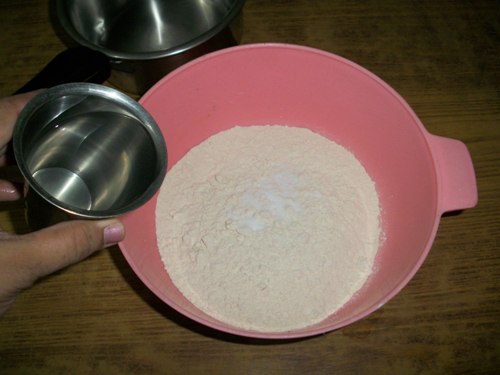  |
| pour water in |
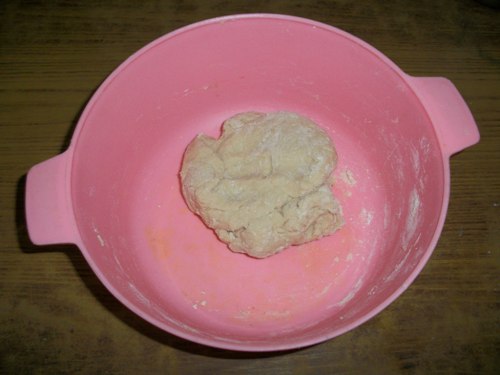  |
| and form a dough |
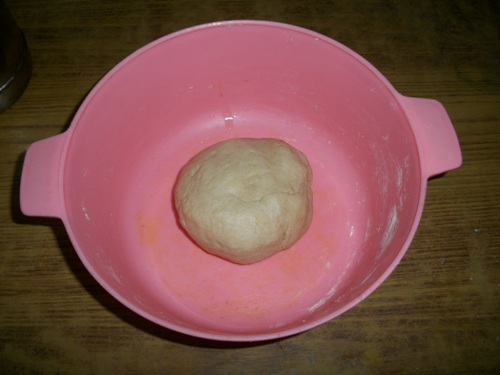  |
| apply oil and leave aside for 30 mins |
How to Make Stuffed Paratha (Stuffing inside Dough)
Divide the dough and stuffing into equal portions. Take one dough balls and roll it little bit. Take one portion of stuffing and seal the dough from all sides. Now roll this into chapattis. You can dip raw flour if needed.
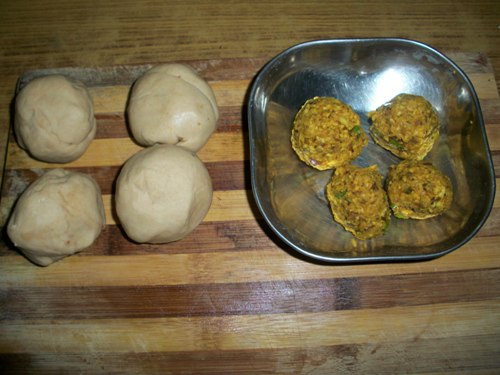  |
| divide the dough and the cooled stuffing into equal portions |
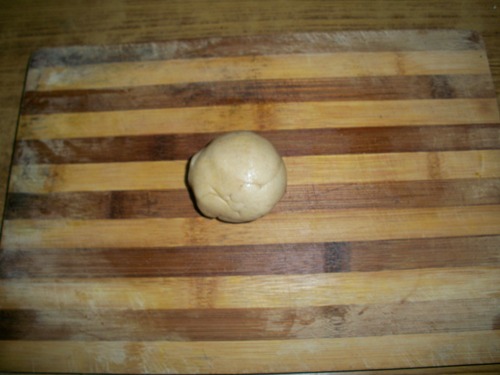  |
| take one dough ball |
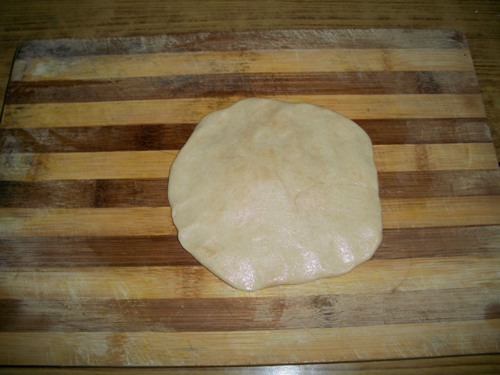  |
| spread it slightly |
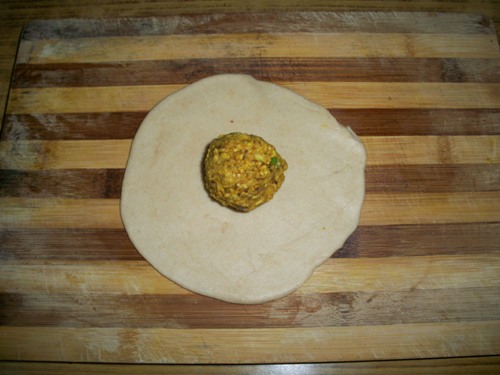  |
| put the stuffing in the centre |
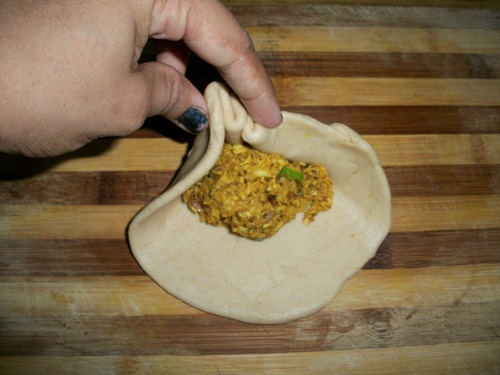  |
| start closing |
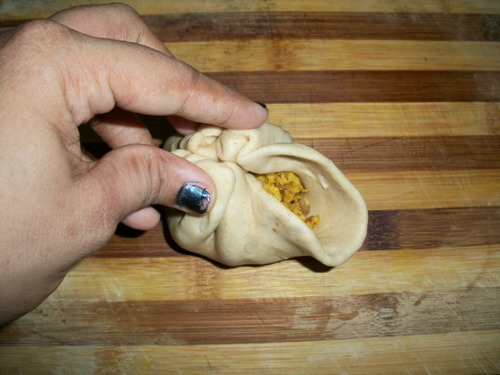  |
| seal from all sides |
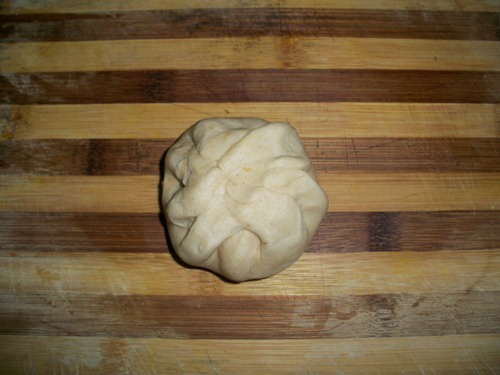  |
| all covered nicely |
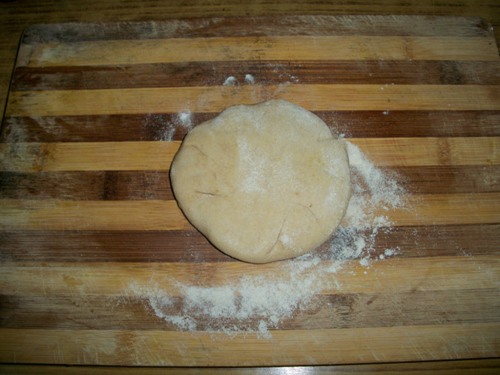  |
| now dip in a little raw flour |
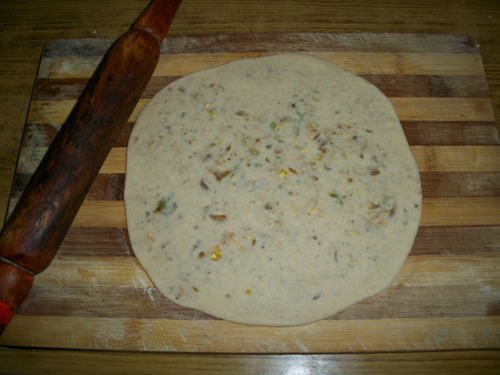  |
| and roll into chapatis |
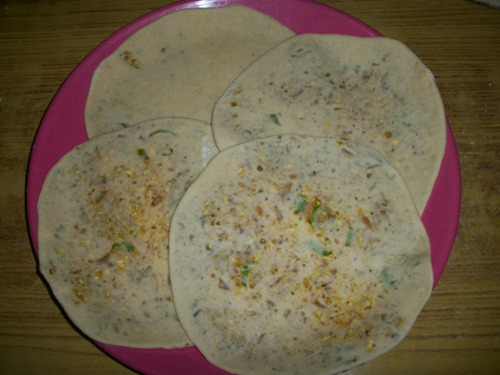  |
| all rolled |
How to Cook Mooli paratha (Radish Paratha Recipe)
Heat a tawa and put this on it. After 30 seconds flip it over and apply ghee or oil on top. Flip it again and cook on both sides till light golden and cooked. Remove it and serve with pickle or raita.
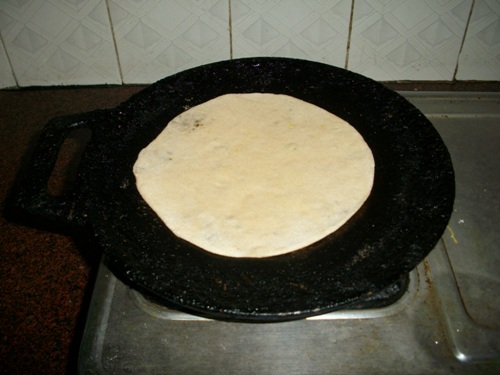  |
| now start frying …put the roti in hot tawa |
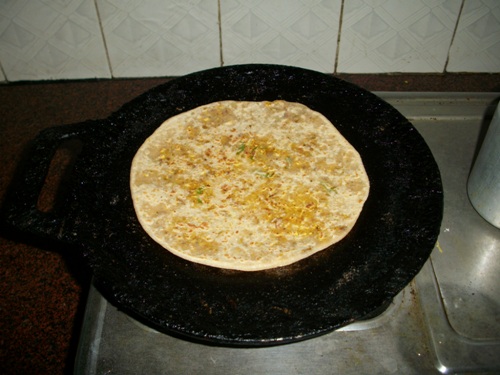  |
| after few seconds when there is no dough symptoms on top, turn it over |
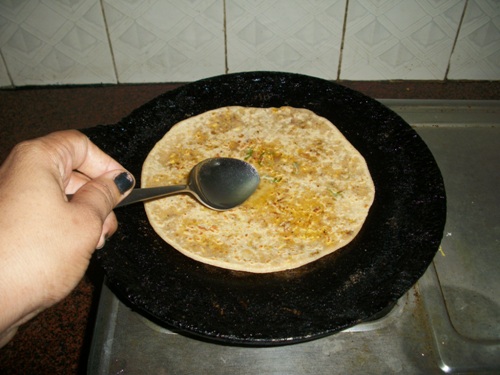  |
| apply ghee or oil |
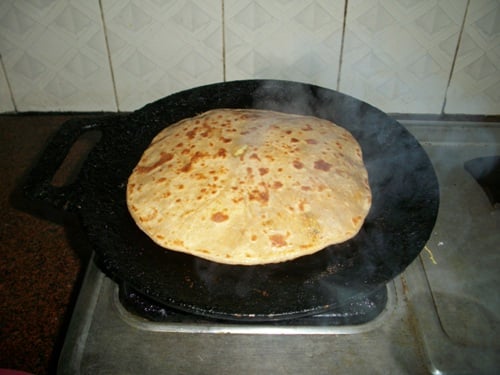  |
| and flip it back..If you have made it rightly the roti will puff up |
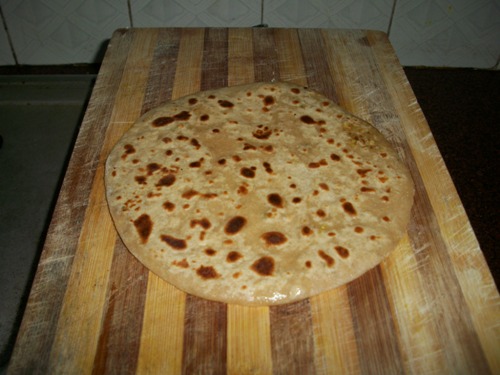  |
| done… |
  |
| Serve |
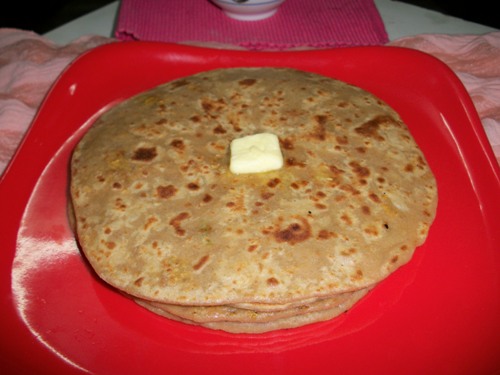  |
| This can be packed for lunch box as well. |
Expert Tips
Stuffing Too Wet? – Always squeeze out the water from the grated radish after adding salt. If you skip this step, the stuffing will be too watery, and the paratha might tear while rolling. A dry filling is much easier to handle and makes the paratha hold its shape better.
Stuffing Falls Out While Rolling? – This usually happens when the edges of the dough aren’t sealed properly. After placing the stuffing in the center, bring all the sides together and pinch them tightly at the top to close the dough ball. Press gently to flatten it before rolling this keeps the filling locked inside.
Serving: Best served hot with thick curd, mango pickle, or onion raita. I sometimes mix curd with a little pickle juice and serve it alongside. You can also pair it with a simple dal or a cup of masala chai for a cozy meal.
Storage: These parathas stay soft for hours, so you can make them ahead and wrap in foil for lunchboxes. Reheat on tawa with a few drops of ghee or microwave with a moist paper towel. If storing overnight, keep them in an airtight container in the fridge — they stay fresh and reheat well the next day too.
FAQ
Q: Can I use frozen radish?
A: Yes, frozen radish works fine! Just make sure to thaw it completely and then squeeze out all the extra water using your hands or a muslin cloth. This helps prevent the filling from becoming soggy, which can make rolling the paratha difficult.
Q: Can I skip onions?
A: Absolutely. If you’re preparing this for fasting or prefer not to use onions, just leave them out. The paratha still tastes great. To make up for the flavor, you can slightly increase the quantity of chat masala or add a pinch of amchur (dry mango powder) for that extra tang.
Q: Can I make this gluten-free?
A: You can give it a try using millet flour (like jowar or bajra) or rice flour, but rolling the stuffed paratha might be challenging as these flours don’t have the same elasticity as wheat. Instead, you can turn it into a flat pancake-style paratha by patting the dough out directly on the pan without stuffing.
Variations
Add Paneer: You can mix in some crumbled paneer with the cooked radish filling to make it richer and creamier. It also tones down the sharpness of the radish, making the paratha more balanced in taste. This combo is also high in protein and perfect if you want something more filling.
Use Spinach Dough: Puree a handful of spinach leaves and mix it into the wheat flour while kneading. It gives the dough a lovely green color and adds extra nutrition without changing the taste much. It’s a great way to sneak in some greens, especially for kids.
Cheese Twist: If you’re cooking for kids (or just love cheese!), try adding some grated cheese to the radish filling before stuffing. When cooked, the cheese melts inside and gives a gooey, delicious surprise with every bite. Just don’t overfill to avoid it oozing out while rolling.
No-Stuff Paratha: If you find stuffing tricky or are short on time, just mix the grated and squeezed radish with all the spices directly into the flour and knead it into a dough. Then roll it like a regular paratha and cook. It’s quicker and beginner-friendly with no sealing or tearing worries!
More Paratha Recipes
📖 Recipe Card
Radish Paratha Recipe | Mooli Paratha Recipe
Servings: 4 servings
Calories: 287kcal
Instructions
Pre-Prep – Treating the Radish – first grate the white radish finely and place it in a colander over a plate. sprinkle about ½ tsp turmeric and salt over it and mix it gently. let it sit for around 30 minutes – this is crucial as it draws out the excess water and reduces the raw smell. Once done, squeeze the radish tightly using my hands and discard the water. This dry radish is ready to be cooked.
Making the Filling – In a pan, heat a tablespoon of oil and add ajwain seeds. Once they sizzle, add chopped onions and green chilies. After sautéing them for 2 minutes, add all the spices: turmeric, chili powder, coriander, cumin, garam masala, and chat masala. Then add the squeezed radish and cook it for 5–6 minutes till it’s fully dry and aromatic. Once cooked, keep it aside to cool.
Making the Dough – take 2 cups of whole wheat flour and mix in 1 tsp of salt. Slowly, add water and knead it into a soft dough. A little oil on the top keeps it from drying. cover and let it rest for about 30 minutes. This resting time makes the dough soft and elastic.
Shaping and Rolling the Parathas – divide both the dough and the stuffing into equal portions. roll one dough ball slightly, place the radish stuffing in the center, gather the edges, and seal it like a pouch. Then, flatten it gently and roll it out into a paratha, using dry flour as needed to prevent sticking.
Cooking the Parathas – heat a tawa and place the paratha on it. After 30 seconds, flip it and apply ghee or oil. Then, flip again and cook both sides until golden spots appear and it’s cooked through. If rolled and stuffed well, the paratha often puffs up!
Video


Nutrition
Serving: 1servings | Calories: 287kcal | Carbohydrates: 56g | Protein: 8g | Fat: 3g | Saturated Fat: 0.3g | Polyunsaturated Fat: 1g | Monounsaturated Fat: 2g | Trans Fat: 0.01g | Sodium: 904mg | Potassium: 354mg | Fiber: 5g | Sugar: 4g | Vitamin A: 155IU | Vitamin C: 22mg | Calcium: 57mg | Iron: 4mg
If you have any questions not covered in this post and if you need help, leave me a comment or mail me @[email protected] and I’ll help as soon as I can.
Follow me on Instagram, Facebook,Pinterest ,Youtube and Twitter for more Yummy Tummy inspiration.
IF YOU MAKE THIS RECIPE OR ANYTHING FROM YUMMY TUMMY, MAKE SURE TO POST IT AND TAG ME SO I CAN SEE ALL OF YOUR CREATIONS!! #YUMMYTUMMYAARTHI AND @YUMMYTUMMYAARTHI ON INSTAGRAM!
More Paratha Recipes
–>

